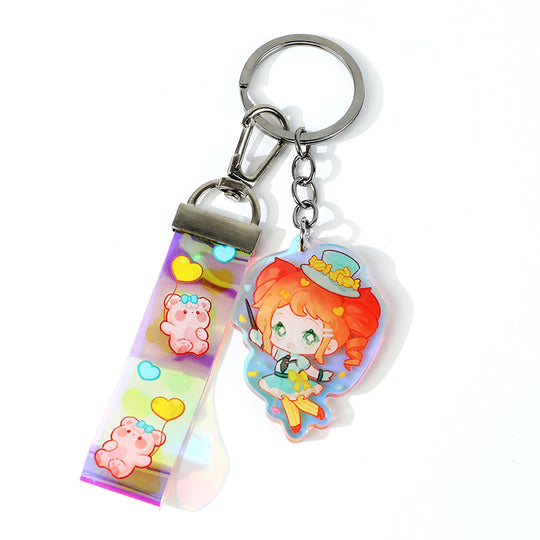The Timeless Elegance of Religious Art Jewelry: A Historical Overview

Jewelry has long been a medium for personal adornment and a symbol of cultural identity. Among its many forms, religious art jewelry stands out for its profound historical significance and enduring appeal. This unique category of jewelry not only reflects personal faith but also encapsulates the artistic and cultural heritage of Holyart civilizations throughout history. From ancient times to the present day, religious art jewelry has transcended mere decoration, serving as a testament to human spirituality and artistic expression.
Ancient Beginnings
The history of religious art jewelry dates back to ancient civilizations, where it played a crucial role in religious and ceremonial practices. In Ancient Egypt, jewelry was not merely ornamental but carried deep spiritual meaning. Amulets and talismans, often depicting gods and sacred symbols like the Ankh and the Eye of Horus, were believed to offer protection and blessings. Crafted from gold, precious stones, and faience, these pieces were buried with the dead to ensure safe passage to the afterlife.
Similarly, in Mesopotamia, jewelry often featured motifs of deities and mythological creatures. The Sumerians created intricate necklaces, earrings, and headdresses adorned with lapis lazuli, carnelian, and gold. These items were not only expressions of wealth but also served religious purposes, linking the wearer to the divine.
Classical Antiquity
During the Classical Antiquity period, Greek and Roman jewelry further evolved in complexity and symbolism. Greek artisans crafted delicate pieces inspired by their pantheon of gods and goddesses. Laurel wreaths, a common motif, symbolized victory and divine favor. The Romans, influenced by the Greeks, also embraced religious themes in their jewelry. They created rings, brooches, and pendants engraved with images of gods, such as Jupiter and Venus, as well as symbols like the fish, which later became an early Christian symbol.
Medieval and Byzantine Eras
The Medieval and Byzantine eras witnessed a flourishing of religious art jewelry, heavily influenced by Christianity. In the Byzantine Empire, jewelry became an important expression of faith and imperial power. Crosses, often encrusted with gemstones and pearls, were worn as personal devotionals and status symbols. Icons and relics, encased in ornate frames, became popular, allowing individuals to carry their faith with them.
In medieval Europe, the rise of monasticism and the power of the Church saw an increase in the production of religious jewelry. Rosaries, crucifixes, and medals depicting saints were commonly worn by the devout. The craftsmanship of the time was characterized by the use of precious metals and enameling techniques, producing pieces that were as much about artistry as they were about faith.
The Renaissance and Baroque Periods
The Renaissance renewed interest in classical antiquity, leading to a revival of ancient motifs in religious art jewelry. However, the period also saw innovations in techniques and designs. Artists like Benvenuto Cellini created intricate pieces that combined religious themes with Renaissance artistry. Jewelry from this period often featured detailed engravings, cameos, and the use of gemstones to depict biblical scenes and saints.
In the Baroque period, they continued this trend but with an added emphasis on opulence and drama. Religious jewelry from this time was characterized by its grandeur and elaborate designs. Reliquaries, which housed sacred relics, were adorned with intricate goldwork and a profusion of jewels, reflecting the Baroque aesthetic of excess and grandeur.
The Modern Era
In the modern era, religious art jewelry has continued to evolve, reflecting both contemporary tastes and traditional designs. The Victorian period saw a resurgence in religious symbolism, with mourning jewelry often featuring crosses and other Christian motifs as a way to memorialize loved ones. The Arts and Crafts movement of the late 19th and early 20th centuries brought a renewed focus on handcrafted, artistically significant pieces, often inspired by medieval and Renaissance designs.
Today, religious art jewelry remains a significant part of personal and cultural identity. Contemporary designers draw inspiration from historical pieces while incorporating modern materials and techniques. From simple cross pendants to elaborate custom pieces, religious jewelry continues to be a means of expressing faith, heritage, and individuality.
Cultural Significance
The cultural significance of religious art jewelry extends beyond its aesthetic appeal. These pieces serve as tangible connections to the past, preserving the traditions and beliefs of different cultures. They offer insights into how people have expressed their spirituality and devotion throughout history. Moreover, religious jewelry often transcends religious boundaries, with certain symbols like the cross or the Star of David being recognized and respected globally.
Conclusion
The timeless elegance of religious art jewelry lies in its ability to bridge the gap between the sacred and the artistic. From the ancient amulets of Egypt to the elaborate reliquaries of the Baroque period and the contemporary designs of today, these pieces tell a story of human spirituality and creativity. They remind us that art and faith are deeply intertwined, each enhancing the beauty and meaning of the other. As we continue to cherish and create religious art jewelry, we honor a tradition that is as old as civilization itself and as enduring as the human spirit.




